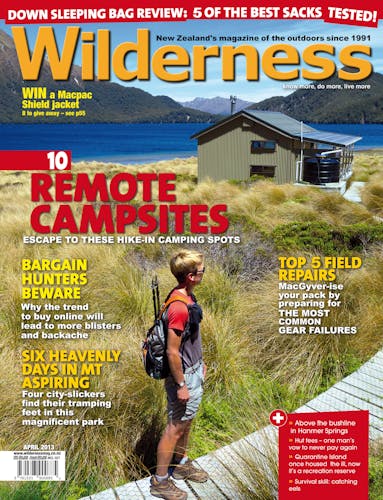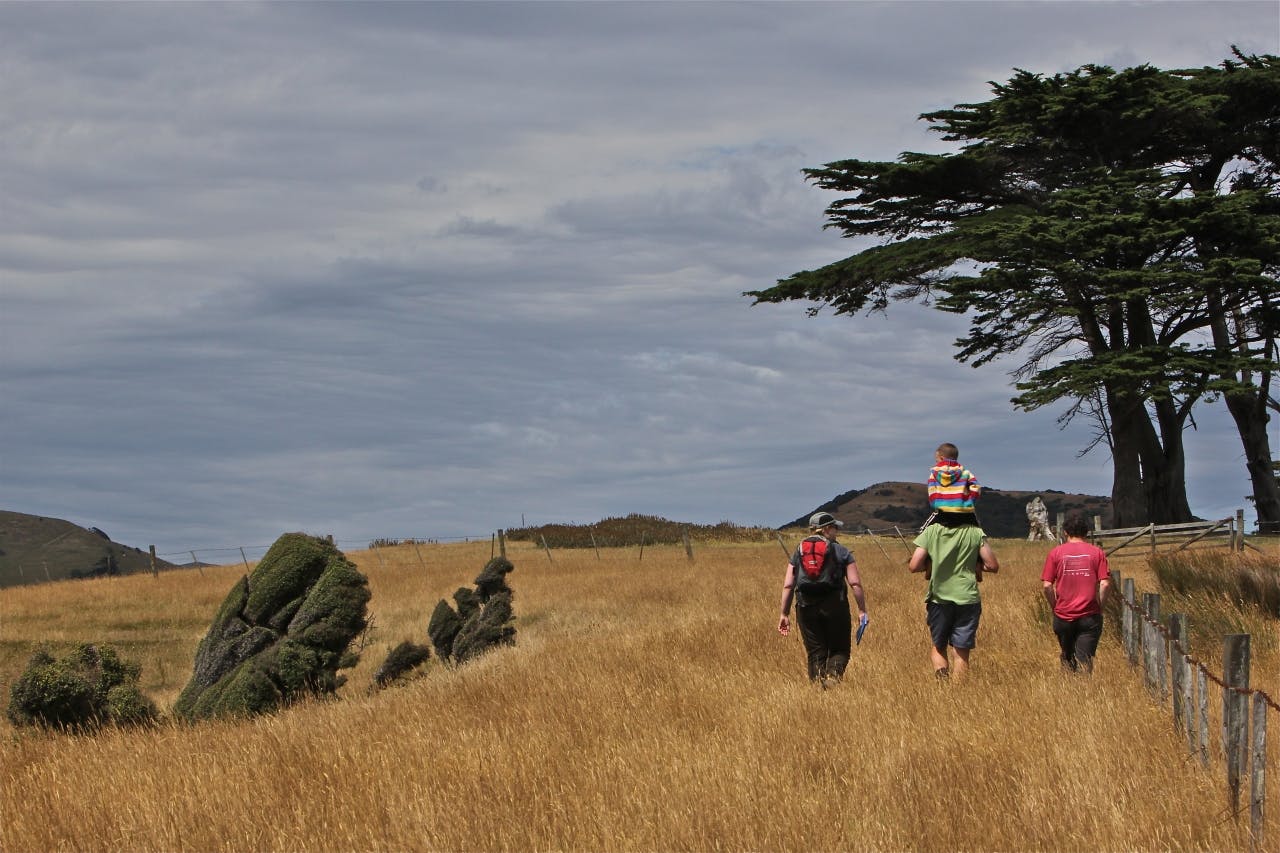There was a time when before entering Otago Harbour ships had to be checked for disease-carrying passengers. If any were found, the ship was quarantined at this 14ha island. By Sarah Bond
Hundreds of Dunedin’s commuters glimpse Quarantine Island on their journey to work, yet surprisingly few have visited it. Intrigued by the promise of a boat ride and a stroll through regenerating bush to see historic ruins, I was ready for a relaxing day trip on the Otago Harbour. Instead I found myself captivated by a microcosm of history – tumbled down hospitals, a graveyard and a rammed earth chapel; and inspired by a community dedicated to protecting this small landmass so close to a major South Island city.
Maori knew the island as Kamau Taurua, a place to set nets, while it had many European names before Quarantine Island. The St Martin Island Community took over the lease in 1958 – the name coming from St Martin of Tours, a fourth century French bishop. Over the decades, immigrants, returned war veterans blighted by venereal disease and a vast array of community groups have been billeted here.
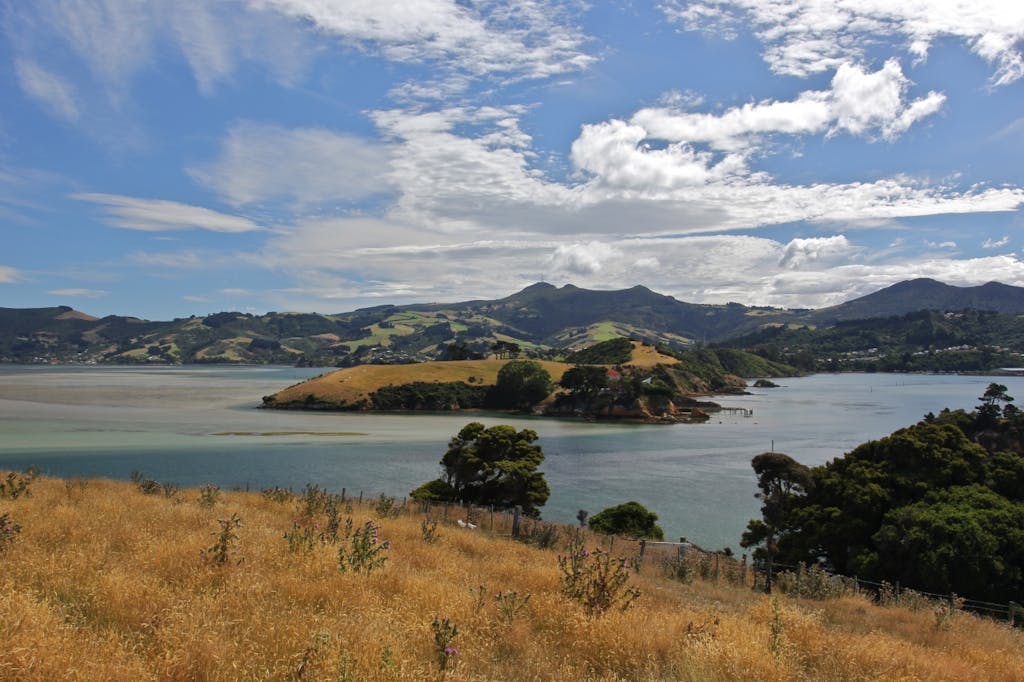
Quarantine Island from the Otago Peninsula. Photo supplied
As a designated Historic Area, the 14ha Island is managed by the Department of Conservation as a Recreation Reserve, while the buildings are owned by the St Martin Island Community. The resident keepers host visitors, who stay in the 28 bunk lodge, and manage the farmlet with its flock of sheep. Their guests range from artists like Ron Esplin and Janet de Wagt, to scout and school groups and those seeking spiritual refuge.
Anyone can visit the island by boat or kayak, as long as they are dressed for the weather and prepared for the fast moving harbour currents and tidal variation. John McLachlan, Skipper of the Vivienne J ferries charted groups from Port Chalmers for a small fee, although my adventure began at Portobello.
Wayne Johnson, Anna Hughes and their boys Eli, 5, and Niwha, 2, meet us at the Aquarium car park. Anna is carrying a bag of vegetables from the Dunedin Farmers market. Wayne and Anna are to be the latest keepers, moving there in early January 2013. Anna beams as she imagines her own island ‘vege patch’.
Wayne hands me a lifejacket as we board Te Whai – a duck egg blue dory – that’ll take us to the island.
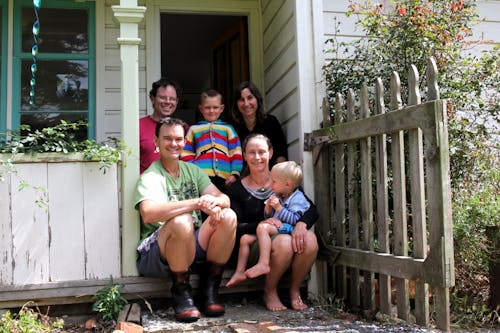
Keepers past and present. Photo supplied
Francine Vella and Alex King, the immediate past keepers, are our welcoming party at the jetty. They have lived on the Island for two years with their teenage children Rebecca and George. As the boat is tied up, I look over the wrecks of the Waikana and Oretie. “People turned up all year round. They sailed, rowed and kayaked out,” says King.
The main Lodge was the original keeper’s house, and the modern keeper’s cottage started out as an Officer’s recreation space. Sitting at the kitchen table, overlooking the harbour, Vella describes their first few months of Island life.
“I had to learn how to drive the boat,” she says. “Alex was fine, he grew up around boats, but there was a day when everyone was waiting for me and I had a real ‘what have I done’ moment. It took me almost five attempts to launch Te Whai as the nor’easter kept blowing me back under the wharf.”
Alex and Francine’s last night on the Island provided a lasting wildlife memory. “It was really calm, and I heard odd noises from down by the Jetty,’ Vella says. “I thought someone had come over and was causing trouble – it was pretty magical to discover a pod of dolphins!”
Over a fresh cup of coffee, Wayne and Anna, talk about their move to the Island. They are both outdoor fanatics – ex-Outward Bound instructors, kayak guides, and they have worked as Outdoor Pursuits instructors at the Otago Polytechnic. Wayne, a talented videographer, has also spent time working in Antarctica.
They are enjoying being back in a world that demands physical effort. The decision to take on the role as Island Keepers centred on a desire to get back to the land and spend more time with the boys. Eli comes into the kitchen with his latest book and says: “Mum when can we read more of Harry Potter?” The book, with a Dunedin Public Library sticker, is a reminder that the city is not too far away.
Getting used to the rhythm of island life, managing the ever morphing ‘to do list’ and logistics are keeping the family busy. “We have to plan everything,” says Wayne. “Even though the city is half an hour away, we can’t just pop back if we forget something.”
Anna describes how the boys are missing their friends, but they seem to be enjoying their new home. “Eli told me, ‘it feels like a dream and I’m wondering if I’m going to wake up’. At least he didn’t say nightmare!”
Like Alex and Francine, Anna enjoys the views from the office. “Even when you are cleaning out a water trough the view is great and the incredible support from the Island Community has balanced out the challenges.”
The St Martin Island Community is a non-profit group that was incorporated in 1958 as a Christian Community with the motto “Work and Worship”. However, from the beginning the community was all-inclusive and non-denominational. The group works hard to find a balance between protecting natural, historical, social and cultural values. Their future vision includes supporting visitors and outdoor education programmes, conservation, and sustainability. Proving the last two points, there are self-composting toilets and a worm farm.
During Community open days, visitors review the “To do” list and help out – no experience required. Whether it is painting walls or planting trees, there is always plenty to do. Local varieties of plants are regenerating across the island, buildings are being restored, while weeds and pests are slowly being eradicated.
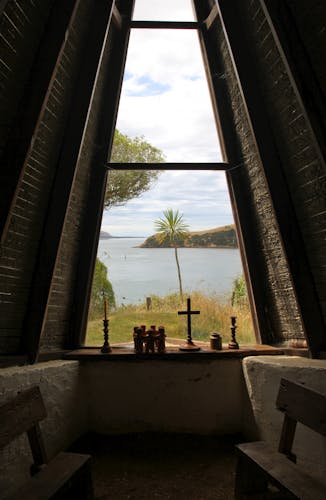
The view towards Aramoana from the island’s chapel. Photo supplied
Wayne takes me on a guided tour and tells me about the history of the Island. There were two hospital sites. The larger building was two stories high, with two wards, and medical rooms. Today, both sites are marked by old bricks lying in long grass.
More than 40 ships were quarantined here, with the first ship being the Victory in 1863. The ships anchored at Hamilton Bay whilst awaiting inspection by a doctor from Port Chalmers. If anyone was unwell, the whole ship went into quarantine. First class passengers stayed aboard while steerage passengers were sent to the Island. The length of stay varied, however, the word quarantine comes from the Italian word quadrantina which translates into a 40 day period.
While wandering down to the graveyard, Wayne explains that 72 people were buried here – not many when you think of the thousands of people who visited. It is a peaceful spot with a marble headstone commemorating the Dougall family. John and Elizabeth Dougall were the first Island Keepers who lived here from 1863 to 1890 when John died of a stroke. One of their children died of scarlet fever, caught, it is suspected, from a quarantined immigrant.
The Dougall’s oversaw the building of the two storied married quarters in 1873. It accommodated over 70 people at a time and the clean beds and good food must have seemed like heaven after nearly three months at sea. The prominent ochre-coloured building has now been restored.
Just below the Married Quarters is the rammed earth chapel. Completed in 1971, it took 11 years to build. Like the rest of the buildings on the island, there is a real tenderness about the structure and you can feel that many hands have cared for it over the years.





